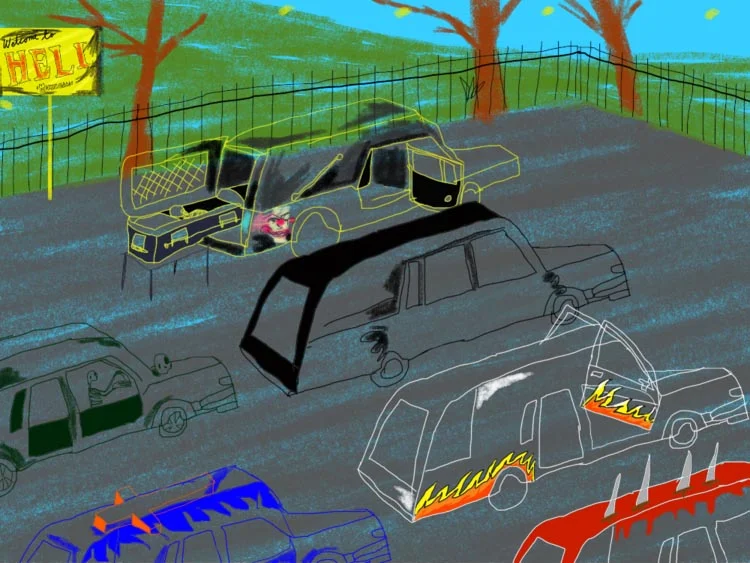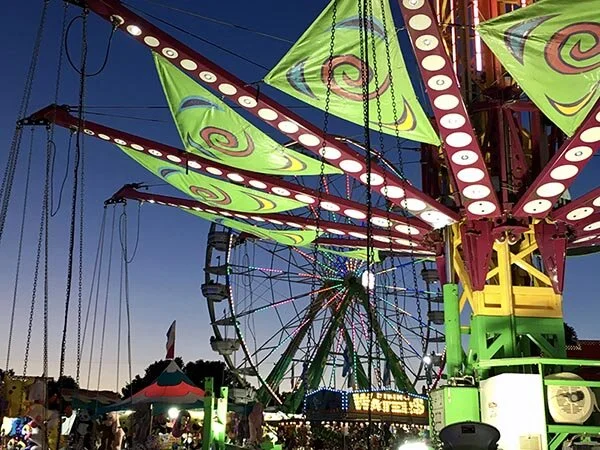Can You Taste The Difference Between Waters?
At the Berkeley Springs International Water Tasting Festival, the life-sustaining substance is put to the test.
By Bailey Brammer
Water: tasteless beverage or full of flavor? Art by Kati Kirsch
Perhaps you’ve never thought about it — or perhaps you’ve thought about it a lot — but where you get your water and who you buy it from can drastically affect its taste and flavor. It’s the reason why some people are staunch Fiji drinkers, while others swear by Smart Water.
Taste, of course, is subjective and highly specific to the individual consuming the item. But that hasn’t stopped one community in West Virginia from hosting an annual water testing festival each winter.
Each February, hundreds of people flock to Berkeley Springs — a small town with a population just over 600 — to participate in the Berkeley Springs International Water Tasting.
A panel of judges tests the dozens of waters submitted each year, which totaled more than 100 at 2019’s festival, with entrants hailing from all over the world. Participants can enter several categories, including bottled non-carbonated waters, purified drinking waters, and sparkling waters, and the judges taste and score them based on various criteria.
“There’s a lot to it,” Jill Klein Rone, one of the event coordinators, told OK Whatever.
“There’s the aroma check, there’s the sipping and the actual tasting, there’s the swishing it around in your mouth and seeing how it feels. There are all of these things to consider when you taste water. It takes a little bit of thought.”
Five judges from a past Berkeley Springs Water Tasting Festival. Photo: Berkeley Springs
The Berkeley Springs Water Tasting festival began in 1991 as a way to increase tourism in the area during the winter. It has since grown into an impactful event for the water community, with many companies vying for a win that they can then brag about on their labels.
“There are bottles of water all over the world that have Berkeley Springs gold medals, silver medals, and bronze medals on their labels,” Rone said. “Sometimes the only English on the label is ‘Berkeley Springs International Water Tasting.’”
Typically, the people selected as judges have little to no background in the ways of water, which is seen as a strength and not a weakness because they won’t come with preconceived notions about specific brands or bottling sources.
Rossilynne Skena Culgan, one of the 10 judges from this year’s water tasting festival, told OK Whatever that they get trained by Arthur von Wiesenberger, also known as the Water Master, before the initial tasting. The tastings are open to the public, and Culgan said there were a lot of rules she had to adhere to as a judge.
“We were told to avoid spicy foods, coffee, alcohol, and chewing gum,” Culgan said. “[We were told] not to wear perfume or cologne because the smells could interfere with the tasting, and you’re seated pretty close to the other judges, so we were told not to make any verbal reactions … because we didn’t want to impact each other’s ratings.”
Culgan also said the judges took breaks between the tastings and ate crackers to help cleanse their palettes. As far as differentiating between the various types of water, Culgan said the Water Master taught them a specific process to stick to.
Judges were instructed to begin by holding up the glass to assess whether the water is colorless, cloudy, or had suspended particles. Culgan said the best way to do this was to hold the glass of water up to a light and then place a sheet of white paper behind the glass. While most waters scored perfectly in this category, Culgan said there were a few entrants that did indeed have visible floating specks.
“You’re kind of trying to use all of your senses. You start with sight, and then move to smell,” Culgan said.
“It’s a little different than wine tasting. You’re asked to do three short sniffs. I didn’t expect there to be any smells, but I actually ended up finding a lot. You find waters that smell like chemicals, some smell like mildew, like chlorine, things like that.”
You’ll never look at tap the water same after being a judge at the Berkeley Springs Water Tasting Festival.
When it’s finally time to taste the samples, judges at the water tasting festival must determine whether the water has a clean, fresh quality to it, or whether it tastes musty, salty, or just not fresh in general. After the initial taste, judges are asked to “mouth feel” the water, which Culgan said is common in beer tastings, and refers to whether the water feels lighter or heavier on the tongue.
“I thought that would be really difficult,” Culgan said, “but once you start tasting them, you can really feel the difference.”
There is also an aftertaste component to the scoring, where judges are asked to identify whether the water quenched their thirst and if any residue was left on their tongues. All of the scoring is done by assigning numbers to each brand of water, and the tastes are all blind tests.
“I was quite nervous to do the tasting because I’d never tasted water in this way. There is quite a science behind it, and once we started, it was really evident to see the difference in different waters.”
After judging the water tasting festival, Culgan said her perception of what type of water she’s drinking has changed, specifically when it comes from a tap.
“I do think I’m more aware of the components of tap water, particularly the smell and how it feels on your palette,” she said. “I feel more attuned to that when I’m at a restaurant or when I’m at someone’s house that lives in a different area than I do.”
As for bottled water, Culgan said she has become more observant of packaging after her stint as a water connoisseur, because one of the categories in the competition focuses on presentation rather than taste.
“They have different waters there that people can admire the bottling [of],” she said. “There were some that were exquisite. A lot of the places where we got to look at their water, they were using really interesting cans or different kinds of bottles. I think we’re so used to the Dasani or Aquafina bottle, but this has really opened my eyes.”
As for people who have never participated in a water tasting, Culgan said anyone could learn these principles and apply them to their own water. However, she said it might be difficult to discern a difference if you’re only drinking one type of water at a time because there’s no sense of comparison.
This year’s winners were from Canada, New Zealand and Norway, with Canada continuously taking the top spots in most categories of the competition. Brands from Arkansas and Colorado ended up taking third or fourth in a few categories.
Brands from the United States, like this one, typically do not take home awards at the Berkeley Springs Water Tasting Festival.
While Culgan said she didn’t know which waters were her favorites because of the blind tastes, Rone, who helps run the festival, said her water of choice comes from Bosnia.
“Back in the ‘90s, a friend of ours was working in the Red Cross in Bosnia,” she said. “He was in this little town that had a castle…and it had really great water. He helped get their sparkling water sent to our contest, and it won.”
To Rone, the most important part of the water tasting festival is the seminar which happens before the competition, because it brings attention to issues the water community is facing.
But there’s another part of the water tasting festival that she also enjoys: collecting the bottles. Whether they’re used as cool decor or a refreshing beverage, she’s found they make for great gifts.
“When I go to parties,” she said, “I don’t take wine. I take water.”











